#iron age archeology
Text
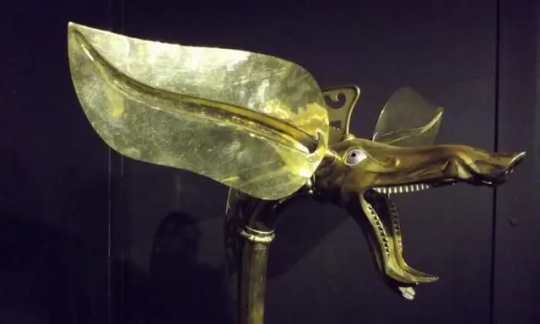

The 'Carnyx' Nightmare of the Roman Soldiers
The Carnyx was a brass musical instrument used as a psychological weapon of war by the ancient Celts between 300 BC and 200AD in western and central Europe and beyond.
The carnyx was once widespread throughout much of Europe, although only a dozen or so fragments are known to us.
It was carried by bands of Celtic mercenaries; it was present at the attack on the Greek sanctuary at Delphi in 279 BC; it defied Julius Caesar in Gaul; and it faced Claudius when he invaded Britain. They are even shown on a Buddhist sculpture in India, proof of the far-flung connections of the Iron Age world.
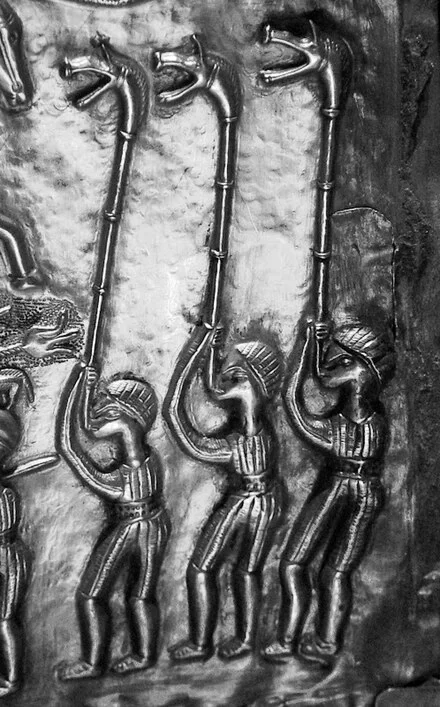
However, they were not only used by the Celts; they were also used by the Dacians in modern Romania. The term “Celtic” is a complicated one. The concept of a pan-European Celtic culture is a myth; rather, aspects of art and technology were shared across vast distances by diverse cultures. The carnyx was one example of this.
A 12-foot-long, thin bronze tube with right-angle bends on both ends made up the carnyx. The lower end ended in a mouthpiece, and the upper end flared out into a bell that was usually decorated to look like a wild boar’s had. Historians believe it had a tongue that flapped up and down, increasing the noise made by the instrument. The carnyx was played upright so that the boar’s head bell protruded well above the warriors’ heads. Its primary goal was to create more noise and confusion on the battlefield.
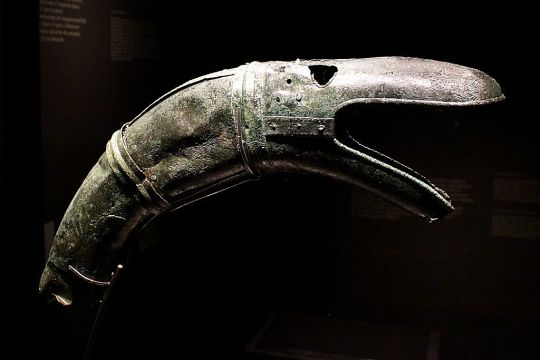
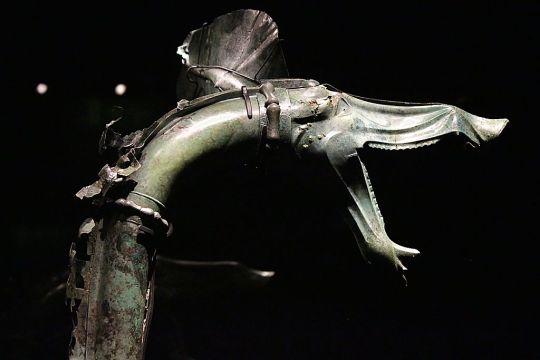

The Greek historian Polybius (206-126BC) was so impressed by the clamor of the Gallic army and the sound of the carnyx, he observed that “there were countless trumpeters and horn blowers and since the whole army was shouting its war cries at the same time there was such a confused sound that the noise seemed to come not only from the trumpeters and the soldiers but also from the countryside which was joining in the echo”.
And the Roman historian Diodorus Siculus wrote, “Their trumpets are also of a peculiar and barbaric kind which produce a harsh, reverberating sound suitable to the confusion of battle.”
Archaeologists discovered a hoard of ritually destroyed weapons in 2004, including a dozen swords, scabbards, spearheads, a shield, bronze helmets, an iron helmet shaped like a swan, a cauldron, animal remains, and seven carnyces. Before the Tintignac discovery, the remains of only five actual carnyces had been found.
The finest was unearthed in Deskford, Scotland in 1816. The Deskford carnyx only has the boar’s head bell and is missing the mane, tongue, and tubing. Images of Carnyx players have been found as well. A Roman denarius, dating from 48 BC bears a representation of a Carnyx. Three carnyx players are featured prominently on the Gundestrup Cauldron, which was found in a Danish peat bog.
One of the seven found at Tintignac, on the other hand, was almost entirely complete. The Tintignac Carnyx was broken into 40 pieces. When puzzled back together, it was found to be just an inch short of six feet long with a single missing section of the tube. The bell was a boar’s head with protruding tusks and large pointed ears. Once restored, the Tintignac Carnyx proved to be the first virtually complete carnyx ever found.
By Leman Altuntaş.
Music video by John Kenny.
#The Carnyx#The 'Carnyx' Nightmare of the Roman Soldiers#Iron Age war trumpet#ancient artifacts#archeology#archeolgst#history#history news#ancient culture#ancient civilizations#celtic mythology#celtic history#roman history#roman empire#roman legion
3K notes
·
View notes
Text
"Dr Sarah Stark, a human skeletal biologist at Historic England, said the findings provided “evidence of a leading role for a woman in warfare on iron age Scilly.”
“Although we can never know completely about the symbolism of objects found in graves, the combination of a sword and a mirror suggests this woman had high status within her community and may have played a commanding role in local warfare, organising or leading raids on rival groups.”
Stark added: “This could suggest that female involvement in raiding and other types of violence was more common in iron age society than we’ve previously thought, and it could have laid the foundations from which leaders like Boudicca would later emerge.”"
#warriors#history#women in history#warrior women#women warriors#women's history#iron age#archeology#england#english history
440 notes
·
View notes
Text

The Himlingøje Woman
Roman iron age grave from Himlingøje, Denmark. She died in her 40s or 50s and was buried with many treasures both local and imported.
i also did a version of the whole grave where everything is in its proper place and not shuffled around like this, but its an odd shaped image for tumblr. will probably post that one later : )
Based on photo by Roberto Fortuna and Kira Ursem from natmus.dk
#iron age#skeleton#grave#archaeology#illustration#denmark#roman iron age#himlingøje#roman glass#archeology
236 notes
·
View notes
Photo



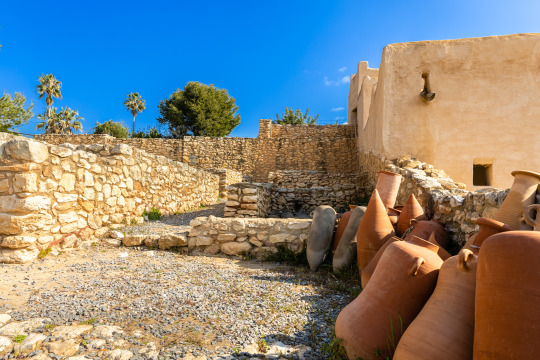

The archaeological site Iberian Citadel of Calafell (Penedès, Catalonia) was a fortified residence built by the Cessetani people (one of the Ancient Iberian peoples) and inhabited between the 6th and 2nd centuries BC. Its destruction was probably due to the Roman occupation.
A part of the archaeological site has been rebuilt in the original techniques to serve two purposes: one, it allowed archaeologists to research the building methods through experimental archaeology; and two, to show what an Ancient Iberian village from around the year 200 BC would look like. You can see the result in these photos: the foundations and lower part of the walls are made of stone to keep out the humidities from the ground, and the rest of wall is made of rammed earth, with ceilings using wooden beams and reed fences. The research focused on those elements that rarely leave a trace, for example the inclination of the roofs (when the walls and roofs are made of a material that doesn't resist the passage of time, like rammed earth) and water draining.
Photos from Enoturisme Penedès and Visit Calafell. You can find the results of the reseach in the article linked here.
#arqueologia#història#calafell#catalunya#ancient iberians#archeology#archaeology#antiquity#iberian#culture#history#historical#travel#europe#southern europe#protohistory#iron age#experimental archaeology#archaeological site#ancient iberian#ancient
70 notes
·
View notes
Text

~ Votive statue of a man.
Culture: Cypriot
Period: Iron Age, Archaic
Date: 550-525 B.C.
Place of origin: Pyla, Cyprus
Medium: Limestone; remains of paint
#ancient#ancient art#history#museum#archeology#ancient sculpture#ancient history#archaeology#votive statue of a man#statue#Cypriot#pyla#cyprus#a#archaic#iron age#550 b.c.#500 b.c.
666 notes
·
View notes
Text








Āraiši lake dwelling Archeological park, a faithful reconstruction of a 9-10c iron age settlement in the same place. Full of nooks, crannies, gentle winds and rustling herbs.
#i would love to hear it filled with life#children running#people singing#going about their lives#archeology#historical reconstruction#applied history#iron age#viking age#baltic summer
11 notes
·
View notes
Text
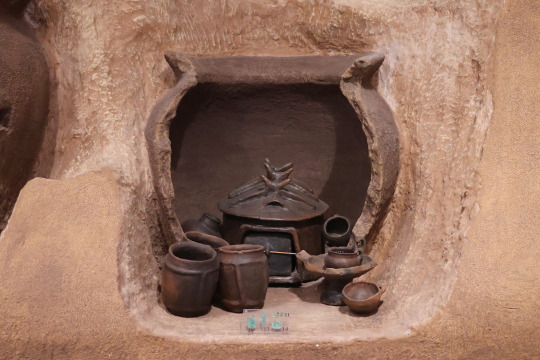
Cremation burial in a pit, complete with a hut shaped urn and grave goods. One of 600 Iron Age burials found at Osteria dell'Osa (just east of Rome) c.900-830 BCE
(date based on museum plaque compared to article on internet archive. I swear Italian museums make figuring out this stuff ridiculously difficult for no reason. I have a Masters in Classical Archaeology and I'm still confused.. /rant)
National Museum of Rome - Baths of Diocletian, Rome
#cremation#burial#iron age#archaeology#cemetery#tomb#original photography#photography#taphophile#taphophilia#lensblr#photographers on tumblr#tombs#archeology#ancient history#museum#Baths of Diocletian#wanderingjana
11 notes
·
View notes
Text

a take on the barnetby bull rider - an Iron Age bowl ornament and figurine found in lincolnshire, england
c.100bce-100ad
happy beltane folks!!
#barnetby bull rider#archeological art#character development#Iron Age find#Iron Age art#digital illustration#artists on tumblr#basil draws#this figure is fascinating to me#some suspect she’s a depiction of europa#and that her eroded hand would’ve once had some fabric attached by an iron rivet#but I kinda see a wheel#another very common motive in Iron Age art and mythology#so I went w that#illustration
15 notes
·
View notes
Text
After some (very justified) criticism to my definition of prehistoric (see tags) here’s another poll:
#ain’t no one got time for the sub classification of the modern period. I’m sorry guys#I’m also not dividing the Palaeolithic or the Iron Age sooo#archaeology#archeology#poll#polls#polling#Palaeolithic#stone age#paleolithic#Mesolithic#Neolithic#Bronze Age#chalcolithic#iron age#viking age#migration period#medieval period#middle ages#modern period#own post#prehistory: before written record. my geographical framework: southern Scandinavia. south Scandinavian prehistory: up to viking age
103 notes
·
View notes
Text

Metal Detectorist Finds Rare 2,000-Year-Old Celtic Coin
A metal detectorist says he did a “jig of joy” after turning up an “exceptionally rare” 2,000-year-old Celtic coin worth thousands of pounds.
Grandfather Mike Taylor couldn’t contain his excitement after finding the rose gold stater while searching farmland in Bishton, near Gwent, South Wales.
fter getting an “iffy” signal from his detector, he dug down four inches before uncovering the coin, struck during the reign of Antedios, an Iceni ruler, from 20-47AD.
The incredibly detailed coin, thought to be worth £4,000, depicts a triple-tailed horse alongside a cross, crescent, six-spoked wheel and pellets.
It bears the tree emblem of the Dobunni, an Iron Age tribe living in Britain prior to the Roman conquest.
The name of Antedios is inscribed in full with a Greek letter, which is unusual as abbreviations were more common.
A Timeline Auctions spokesman said: “This variant is rare because it features the complete name of the ruler, unlike most coins where part of the name is missing.
“Additionally, the ruler’s name is inscribed with the Greek letter Θ, whereas it is usually written with the letter ‘D’. It is a well-centred example with sharp details.
“Only one other example with this lettering is recorded, and our example also includes three extra pellets behind the tail. This makes it an exceptionally rare and beautiful coin in lustrous rose gold.”
Antedios remained neutral during the Roman invasion of 43AD and was made a client of Rome.

#Metal Detectorist Unearths Rare 2000-Year-Old Celtic Coin#Bishton South Wales#Iceni tribe#reign of Antedios#Iron Age triple#coin#celtic coin#collectable coins#ancient coins#ancient artifacts#metal detector#metal detecting finds#archeology#archeolgst#history#history news#ancient history#ancient culture#ancient civilizations#roman history#roman empire
54 notes
·
View notes
Text

Inscribed Hebrew seals, Various sites and unknown provenance, Iron Age II, 8th–6th century BCE, Semiprecious stones, limestone, bone, glass, bronze, silver, H: 0.5–2 cm. The Israel Museum. x
In ancient times, when only a small minority of people could read and write, the seal impression was used as a mark of ownership and as a means of authenticating documents, just as the signature is used today. The seals are usually made of semi precious stone or hard limestone, and a few are carved from bone, glass, bronze, or silver.
Archaeological evidence shows that pottery vessels containing wine, oil, or valuables were closed with clay stoppers which were then stamped with a seal. Papyrus documents were rolled up, tied with a string, and secured with a lump of wet clay on which a seal was impressed (bulla). Great importance is ascribed to the seal in the Bible: it was the symbol of the king's authority, appearing on all royal edicts (I Kings 21:8).
Seal inscriptions were carved in mirror writing, so as to appear correctly in the seal impression. The seals bear the name of the owner, generally with the father's name appended, used as a sort of 'family name.' Some seals also bear an ornamental design. A particularly important group of seals is inscribed with the names of ministers or other royal functionaries, many bearing titles or names that are mentioned in the Bible.
#iron age#ancient israel#kindom of israel#kingdom of judah#neo-assyrian empire#neo-babylonian empire#ancient swana#archeology#israelite archeology#jewish archeology#jewish history#israelite history#uploads#jewish heritage
3 notes
·
View notes
Text
this is weird for someone with a history degree to say but when i want to learn more about the iliad i am not even a little bit interested in learning about historical troy, schliemann's dig, "ooh did the trojan war really happen", or if there was a persian ruler named alaksandu (alexandros) in the bronze age at some point
the one thing i know is that a greco-persian war Did Definitely Not Happen Like That but good news, there is a kickass poem where it does
#@my youtube algorithm#archeological history is one thing and an iron age poem about a mythological bronze age war is another
6 notes
·
View notes
Text

The Himlingøje Woman version 2
This time everything is exactly where it belongs.
Based on photo by Roberto Fortuna and Kira Ursem from natmus.dk
15 notes
·
View notes
Photo
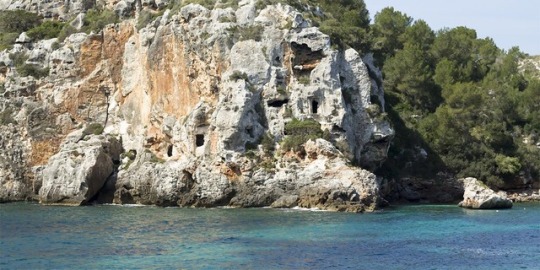
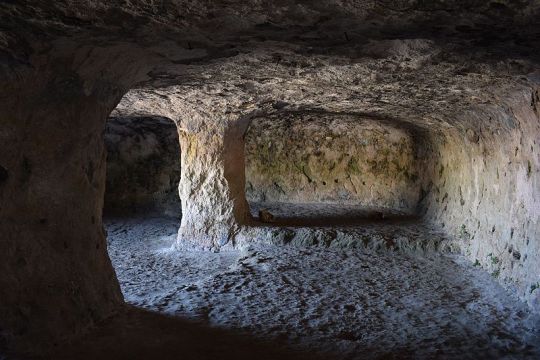
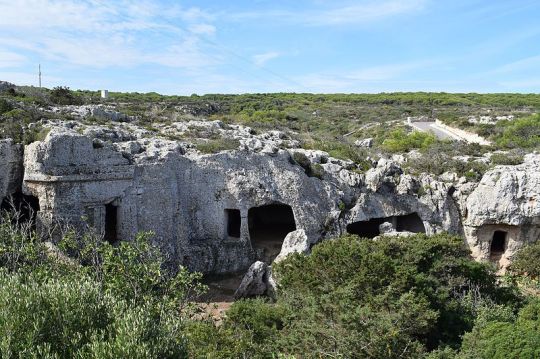

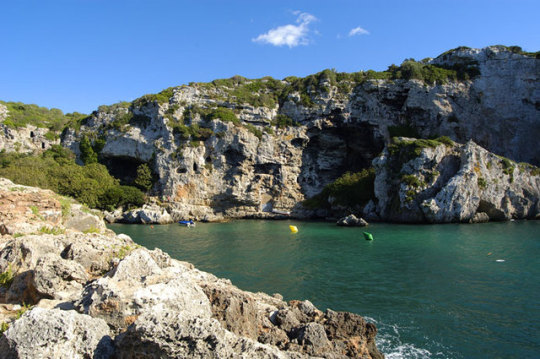
Calescoves Necropolis in Alaior, Menorca (Balearic Islands).
This is the largest necropolis of the ancient Talaiotic culture in Menorca. It consists of more than 90 caves excavated in the rock. The oldest ones are natural caves where humans simply added the door, thought to have been in use between the years 1100 BC and 700 BC. Most caves are artificial, excavated by humans in the Bronze Age (800 BC to 600 BC) and Iron Age (750 BC to 123 BC). These caves were used to bury people with prized objects. After the Roman occupation (123 BC), the place was still used as a site for religious pilgrimage, as can be attested by the engravings in one of the caves.
The objects found in these tombs, as well as the remains of the sunken ships found in the cove in front, can be seen in Menorca’s Museum.
Photos from Menorca Turisme and Bonnin Sanso.
#arqueologia#història#alaior#menorca#illes balears#archaeology#archeology#protohistory#bronze age#iron age#antiquity#mediterranean#sea#travel#europe#wanderlust#southern europe#history#historical#balearic islands
32 notes
·
View notes
Text
This is honestly a bit of an embarrassing question, but I've always had a hard time picturing ring forts and when I google them I find things like this


but in the mythologies like the Ulster cycle, Emain Macha is supposed to be huge (relatively speaking) I'd imagine it housed... idk at least 100 maybe up to 500 people in total. So I'm still having a hard time picturing THAT ring fort...
So I guess my question here is does anyone have some reconstructed pictures that would show a ring fort that large or can explain a little better how a whole community would look in a ring fort? All these pictures that I've found look like single farm/family sized
24 notes
·
View notes
Text
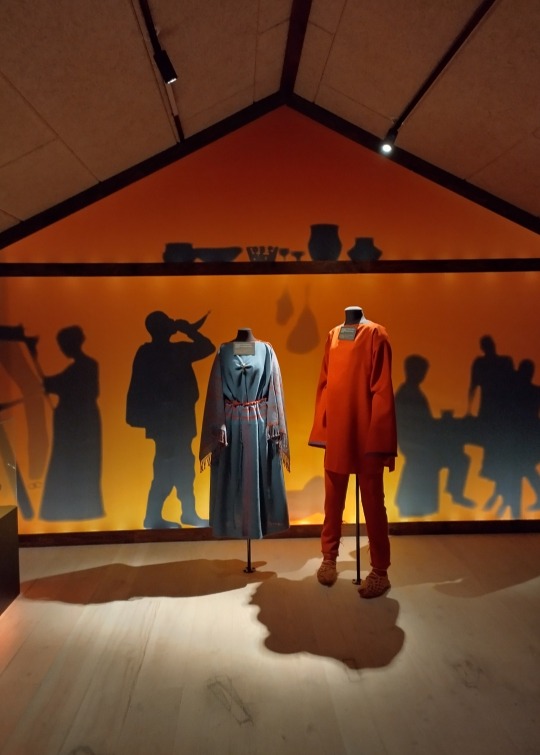

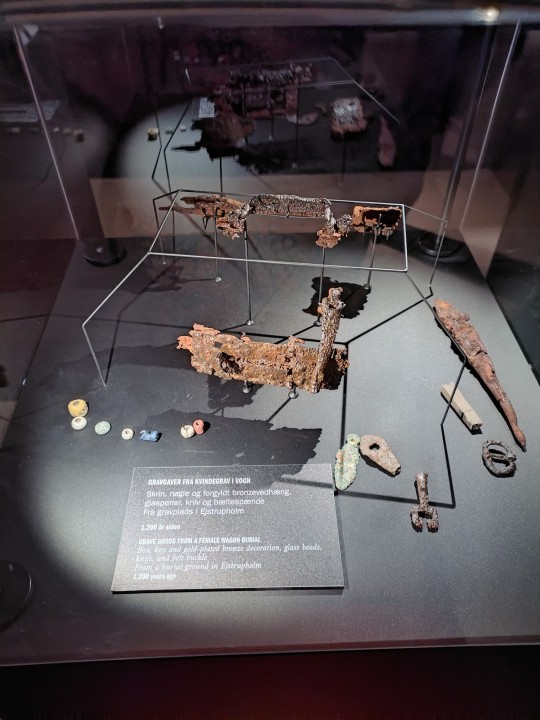

I visited Klosterlund museum in Denmark. It is next to a lake where many archeological finds were made. I really wanted to visit it since the Hammerenup girl is there. An iron age grave with the most complete dress. It's a beautiful red dress with white stripes. Only her clothes and her hair did survive. The best thing was that it was free to visit the museum. I did get the archeological report of the Hammerenup girl at the little museum store.
#visiting museums#Hammerenup girl#archeological finds#Klosterlund#danish history#roman iron age#iron age#archeology#Viking age#Denmark
5 notes
·
View notes